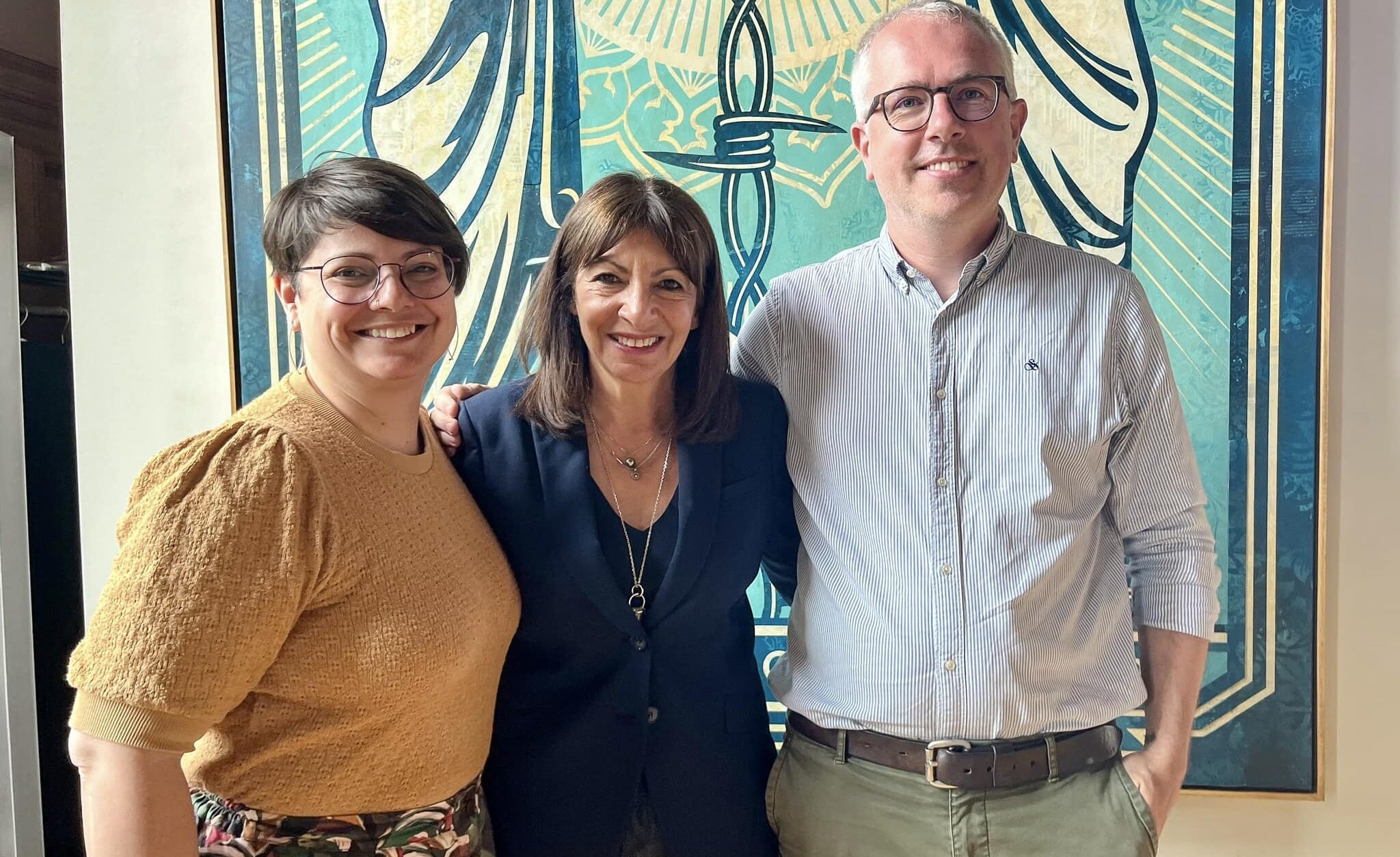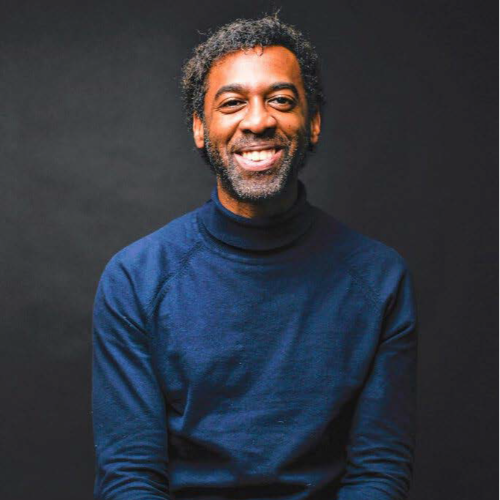When authors Melissa and Chris Bruntlett examined some of the most groundbreaking urban transformations happening around the world, one thing stood out: women were leading the charge.
From mayors to planners, advocates to policymakers, women are reshaping how cities function.
In their new book, Women Changing Cities: Global Stories of Urban Transformation, the Canadian-born, Netherlands-based authors profile leaders from Paris to Bogotá, Manila to Montreal, showing how women are reclaiming streets, reimagining mobility and creating safer, more inclusive public spaces, despite fierce opposition.

Melissa and Chris, along with their two children, relocated from Vancouver to the Netherlands in 2019. They are also the authors of two previous books: Curbing Traffic: The Human Case for Fewer Cars in Our Lives and Building the Cycling City: The Dutch Blueprint for Urban Vitality.
In an interview with Evergreen, Chris shares the inspiration behind the book, the common qualities they saw among the women they profiled, and the role of public spaces in urban transformation.
Evergreen: How does Women Changing Cities build on your previous books, and what inspired you to focus on women leaders?
Chris Bruntlett: Our first two books focused on our experience in the Netherlands. We had visited this country, fallen in love with it and saw that they had a lot of the principles and ideas that cities needed to be more liveable, prosperous and inclusive.
During the pandemic, we saw a lot of cities drastically changing in response to the crisis—their streets, their public spaces, their mobility systems. The cities often had one thing in common, and that was a woman in a position of leadership. We kind of looked at each other and said, there’s something worth exploring and investigating here. What is it about female leadership that breaks through the status quo?
Evergreen: You write that cities built with women in mind are more liveable for everyone. How does that play out?
CB: I think this is best articulated by the City of Barcelona, where we started our journey. They published Everyday Life Urban Planning Manual: Urban Planning with a Gender Perspective, a kind of blueprint for introducing a feminist lens to the urban planning process. It’s not urban planning that’s exclusive to women but a model that considers all stages of human life, from infancy to old age.
For hundreds of years, cities have been planned by able-bodied economically productive men for able-bodied economically productive men. We’re still hyper focused on the commute from the house to the office to the house.
In 2025, the care work that is underpinning all of that economic activity—taking children to school, taking care of elderly relations, the collection and preparation of food—is still predominantly done by the women of the household, on top of having to go to work.
So, the idea of feminist urban planning suggests that we should be thinking differently about how we look at our public realm, thinking outside of our own lived experience, the way that other age groups, other people’s physical abilities, economic means, what their use of the city looks like and how we can accommodate better for them.

Melissa and Chris Bruntlett with Paris Mayor Anne Hidalgo (centre).
Evergreen: What was the most memorable moment or lesson while writing the book? Was there a city or leader that stood out?
CB: We’d be lying if we said this book wasn’t really inspired and influenced by Paris mayor Anne Hidalgo. After a year and a half of trying, we got a message that she would meet with us. Melissa and I got on the first train to Paris and went to meet with her; she was remarkably gracious with her time.
She wasn’t necessarily interested in talking about her accomplishments—the trees she planted, the school streets she created. She wanted to talk about the huge problem of misogyny and patriarchal dominance in politics. She and her peers in France had faced such personal vitriol that she saw it as her mission to address it.
Changing this political situation could mean enabling more female leadership. As we point out in the introduction of the book, of the 300 largest cities in the world, only 25 have female mayors. At the leadership and decision-making level, there’s still a huge gender imbalance, and we need to do everything we can as a society to ask ourselves the difficult questions about why that is, and how we can hopefully fix it.
Evergreen: You note some shared qualities among those you profiled. Can you share some common traits you saw and how they shape city building?
CB: We tried to boil everything down to five qualities that we identified across the 19 women that we profiled. These are not qualities that are solely achieved by women—there are plenty of men that demonstrate them—but there’s something about being a woman that lends itself to these approaches.
The first is how they value ‘care work,’ as I mentioned earlier. This is the work that holds our society together; our economy wouldn’t function without it. The rethinking of our streets and public spaces has to be done through the lens of care work and how we can enable those people.
Another is the act of empathy: understanding that your lived experience is not universal. That there are people of all ages, of all physical abilities, of all incomes and all ethnicities that use the streets and public spaces in your city.
We also identified the quality of prioritizing impact over power. They’re not doing this for the sake of the flashy job title—they feel like they’re elected to do a job, and they’re not afraid to make difficult decisions. They’renot afraid of stirring up some controversy. They’re not afraid of doing things that are deemed unpopular, because they have a quiet confidence that what they’re doing is supported by a silent majority.

Superblocks in Barcelona are about giving space back to people.
Evergreen: What stood out to you about how cities are prioritizing public spaces as part of urban solutions?
CB: I think one underlying thread to a lot of the stories is the recognition that streets are public spaces. Two-thirds to three-quarters of our public realm in cities is dedicated to the movement and storage of cars.
Reclaiming some of that space becomes a huge opportunity. Whether it’s the superblocks in Barcelona or the School Streets in Paris, these were spaces that were dedicated to cars that have been turned into public spaces. They don’t have to be expensive—a lot of them just start with traffic filters, temporary furniture, planter boxes or playground equipment.
I think the most radical act that a lot of these leaders did was just to take that space back from the car and give it to the people living in the city. With that recognition, these communities and these neighbourhoods are much better places.







